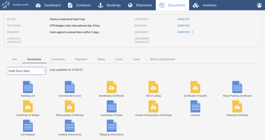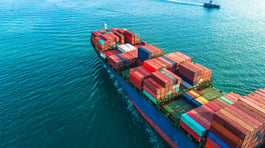FCA Incoterms: How to Optimize Your Shipment from Los Angeles to Tokyo
When engaging in international trade, understanding shipping terms is crucial. One key term is FCA (Free Carrier), which outlines the responsibilities of buyers and sellers in trade agreements. In this article, we'll explore what FCA entails, the pricing structure, responsibilities of buyers and sellers, advantages for each party, and tips for using FCA effectively.
How is FCA Defined in Shipping Terms?
FCA stands for Free Carrier. It specifies that the seller fulfills their obligations once the goods are delivered, cleared for export, to a carrier or another party designated by the buyer. This term is commonly used in international trade agreements and ensures clarity in the logistics process.
What are the Buyer’s and Seller’s Responsibilities with FCA Agreements?
FCA outlines clear responsibilities for both parties. Here’s a breakdown:
Seller’s Responsibilities:
- Ensure goods are ready and delivered to the agreed location (e.g., the port of Los Angeles) in accordance with export requirements.
- Provide necessary documentation for export clearance.
- Load goods onto the buyer's nominated carrier, if specified in the agreement.
Buyer’s Responsibilities:
- Arrange and pay for the main carriage (freight) from the point of delivery to the destination (Tokyo, Japan).
- Handle insurance coverage during transit, if desired.
- Manage import clearance, duties, and transportation from the port of discharge to the final destination.
Advantages of FCA for Buyers and Sellers
For Sellers:
- Reduced risk and responsibility once the goods are handed over to the buyer’s carrier.
- Predictable cost structure as their obligations end at the point of delivery.
For Buyers:
- Greater control over the shipment process, including the choice of carrier and freight terms.
- Flexibility to negotiate favorable freight rates and insurance terms.
When to Use an FCA Agreement
FCA agreements are ideal when:
- The buyer wants control over the logistics chain from the point of export.
- The seller prefers to limit their responsibilities to the local export process.
- Both parties are familiar with their respective logistical and customs requirements.
FCA Agreement FAQs
1. Does FCA include freight costs?
No, under FCA, the buyer is responsible for arranging and paying for freight from the delivery point.
2. Who handles insurance under FCA?
The buyer typically arranges insurance for the goods in transit.
3. What’s the seller’s risk in FCA?
The seller’s risk ends once the goods are delivered to the agreed location, cleared for export.
Incoterms 2020 FCA: Key Updates and Risk Allocation
Incoterms 2020 clarified that FCA allows the seller to load goods onto the buyer's transport if stipulated in the agreement. The risk transfers to the buyer at the point of delivery.
FCA Transportation Options
FCA can be applied to all transportation modes, including sea, air, road, and rail. For this shipment, the goods (fruits) will be transported via sea freight from the Port of Los Angeles to the Port of Tokyo.
Using FCA for Shipments
FCA agreements offer flexibility and cost advantages, especially when the buyer seeks control over shipping logistics. However, it is essential for both parties to agree on clear delivery terms and locations to avoid disputes.
Subscribe to Our Newsletter!
Want to learn more about FCA agreements and optimize your trade operations? Subscribe to our newsletter for expert guidance and updates on international shipping best practices.




Leave a Comment